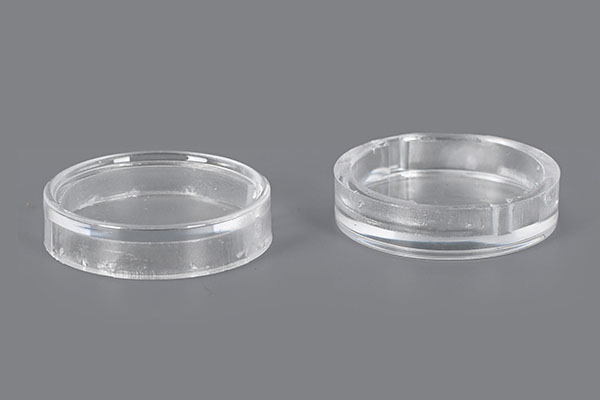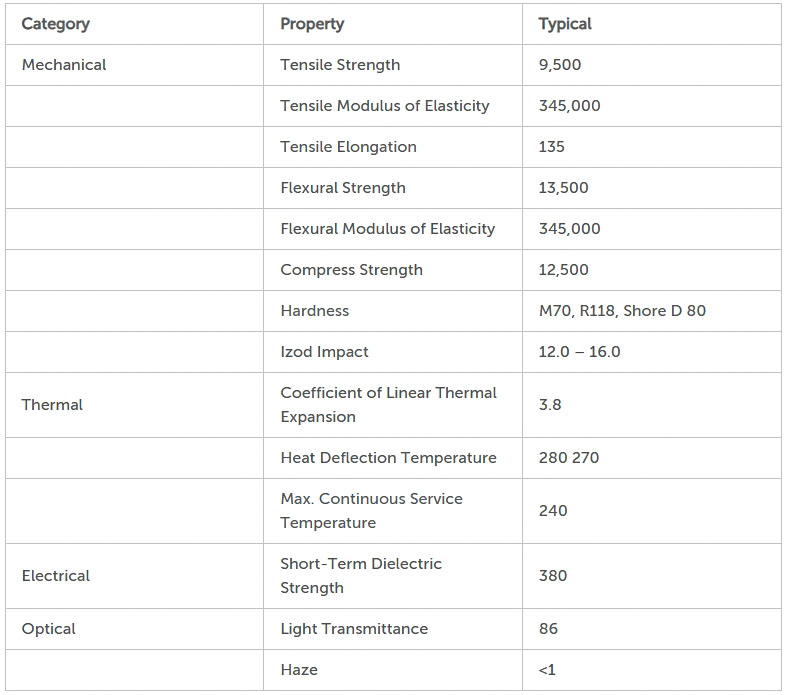Molding Polycarbonate: Guide for Transparent Plastic Parts
Parts made of polycarbonate (PC), a strong, transparent, and heat-resistant polymer, are produced through molding polycarbonate and find use in everything from consumer goods and medical equipment to automotive and computer components. It is a widely used thermoplastic with exceptional mechanical qualities like high strength, stiffness, and resistance to heat and impact combined with great durability and impact resistance.
Moreover, polycarbonate has superior optical qualities. Most light flows through in many grades, with light transmission rates ranging from 80% to 90%. This amorphous plastic doesn’t lose its strength or durability even after being colored. Since polycarbonate (PC) keeps its physical characteristics over a larger temperature range, it is occasionally used in place of acrylic. Polycarbonate is another lightweight option for glass that offers noticeably better impact resistance.
However, as polycarbonate comes in a variety of grades, part designers need to compare them to one another as well as to other materials. This article covers the various kinds of injection molding polycarbonate and looks at typical material features, general benefits, and popular uses in addition to processing parameters and design guidelines for molding polycarbonate. Our Injection Molding Design Guide contains general best practices that engineers and part designers can learn as well.

Polycarbonate Properties
Below, you’ll find a summary of some typical properties of polycarbonate plastic.

Polycarbonate Benefits and Applications
While the addition of fillers and additives can influence these values, polycarbonate maintains its fundamental advantages, which are particularly evident in its applications.
High Strength and Temperature Resistance: Polycarbonate is a robust and resilient plastic capable of withstanding high impacts and extreme temperatures. Applications include automotive tail light housings and LED lighting fixtures.
Versatility: Molding polycarbonate allows for the creation of parts with intricate designs and complex shapes. Examples encompass enclosures for various devices and equipment, such as scientific instruments and medical robots.
Cost-Effectiveness: Molding polycarbonate offers a cost-effective manufacturing process suitable for high-volume part production. Applications for high-volume PC parts include brackets and medical tubing.
Optical Transparency: Polycarbonate boasts exceptional optical clarity and transparency, making it ideal for applications necessitating clear or see-through components. Examples include eyeglass lenses, safety goggles, and hard hat visors.
Lightweight: Polycarbonate is a lightweight plastic that can effectively reduce the overall weight of a product. This characteristic is especially valuable for the automotive and aerospace industries, as well as for handheld consumer products.
Design Guidelines for Molding Polycarbonate
When crafting parts for molding polycarbonate, adhering to specific guidelines ensures that your PC components meet their intended purpose.
Wall Thickness: Injection molding polycarbonate accommodates slender walls and intricate shapes. It’s advisable to maintain a minimum wall thickness of approximately 0.040 inches (1 mm), with a maximum limit of 0.150 inches (3.8 mm).
Rib Thickness: Ribs can enhance the strength and support of polycarbonate injection molding parts. For optimal results, set rib thickness at 0.5 to 0.6 times the thickness of the adjacent wall. Avoid using a rib height exceeding three times the thickness.
Corner Radii: Sharp corners should be avoided, as they can lead to stress concentrations. With injection molding polycarbonate, it’s best to incorporate a corner radius of at least 0.125 inches (3 mm).
Draft Angle: Polycarbonate components necessitate a taper, or draft angle, to facilitate easy part ejection from the mold. Typically, a draft angle of 0.5° to 1° per side suffices for most PC injection molding parts. However, depending on the part’s shape and angle, 1° to 3° per side may be required.
Gate Location: Optimal gate placement, where molten polycarbonate flow induces minimal stress, can be determined through mold flow analysis.
Surface Finish: Polycarbonate supports both glossy and high-gloss finishes. Matte finishes are suitable for applications like control panel overlays, reducing glare and softening images. Non-glossy finishes can be employed with screw caps.
Polycarbonate Material Processing
Polycarbonate grades with superior mechanical properties possess a higher molecular weight. Consequently, these injection-moldable plastics exhibit a lower melt flow rate, making processing more challenging. Designers must select a PC grade meeting end-use requirements, but molders should also prioritize grades with higher melt flow rates for optimal processing.
During material processing, injection molders need to consider the following factors:
Drying: Due to polycarbonate’s moisture absorption, pre-drying is crucial before injection molding. Typically, drying necessitates conditions of 100° to 120°C for 3 to 4 hours, ensuring moisture content remains below 0.02% before commencing processing.
Mold Temperature: The recommended mold temperature usually falls between 150° and 174°C, though the precise temperature varies according to the polycarbonate grade being molded. Lower temperatures are appropriate for high melt flow rate (MFR) grades, while higher temperatures are needed for low MFR grades.
Injection Pressure: The recommended injection pressure for polycarbonate typically ranges from 70 to 100 MPa, but it may vary based on part size and complexity. In general, maintaining higher pressure is preferred to expedite molding.
Injection Speed: Smaller gates and edge-style gates benefit from slower injection speeds, whereas larger gates and other types of injection-molded polycarbonate parts require higher speeds.
Sungplastic Helps with Molding Polycarbonate
Excellent qualities including impact and heat resistance can be found in injection molding polycarbonate products. However, molding polycarbonate might be difficult because to some grades’ low melt flow rates. As a skilled and informed production partner, we will guide you through the procedure and ensure that you receive the finest outcomes.
You may obtain free design for manufacturing (DFM) analysis for your molding polycarbonate projects at Sungplastic. No matter how complicated your designs are, our professionals walk you through the production process to guarantee that you receive high-quality parts.
Our engineers and designers speak English fluently and are able to maintain direct and unambiguous communication throughout the manufacturing process.
Please get in touch with us if necessary.
Get a free quote and design analysis today.
We’ll reply to you within 6 working hours.
We respect your privacy.
+86 139 2927 4777 (WhatsApp, Wechat)
